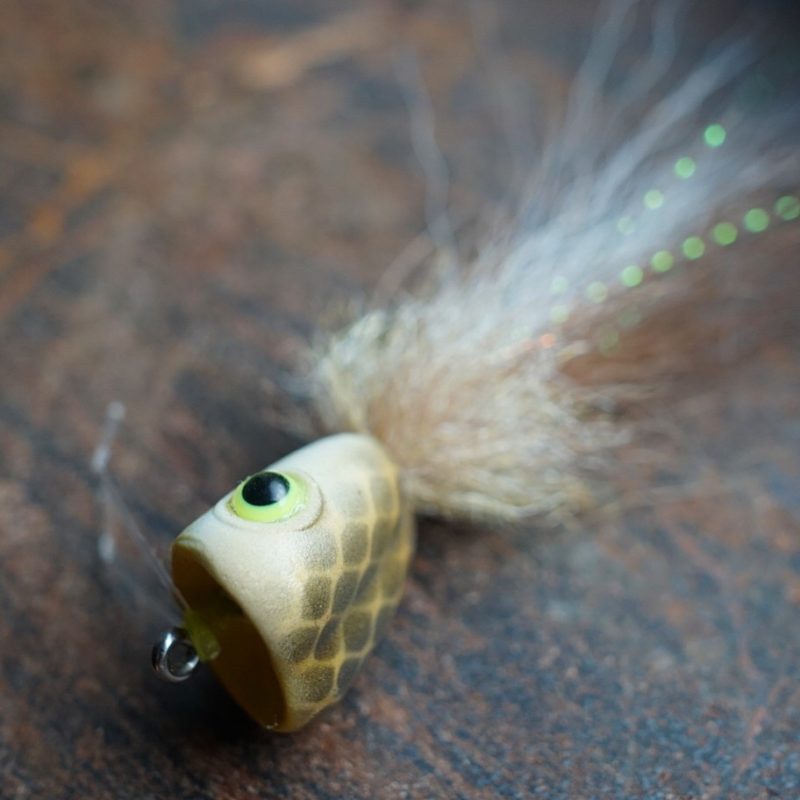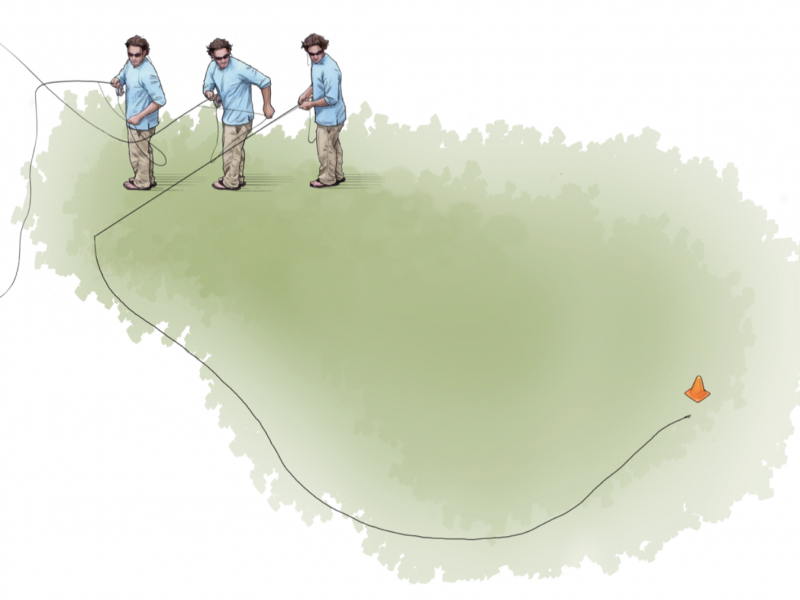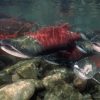Drew Chicone | 1 October 2019
Planning a trip to Sanibel … here’s what you need to bring, and a few tips that will help you close the deal on persnickety beach snook.
As a local bird here in Ft. Myers, Sanibel Island’s picturesque beaches and world class snook fishing are only a half a cup of coffee and two Hank Williams Jr. songs away. Over the last dozen plus seasons of chasing snook, I have refined my packing list down to just the key essentials required for a full day on the beach. Most of the time I have a spare rod in the car just in case, but for the most part I try to pack light, and not haul too much stuff around on the beach. May and June are prime fishing times here, and by the number of questions I have received over the last few years about what to bring, it sounds like a there will be more fly fisherman than swimmers this year. For those of you who have bought your ticket, here’s what I would suggest you bring, along with a few tips that might help close the deal if the snook get picky!
Clothing
It sounds crazy, but this time of the year these fish are under a lot of pressure, and dozens of fly rodders are chasing them up and down the beach all day long. Dark colors silhouette you against the light sand or sky backdrop, and the fish cue in on your movements right away. I strongly recommend dressing in kaki or (sand colored clothes) or natural colors. Even a light blue shirt will help you blend in to the skyline. I see so many folks wearing neon… which is great for the grip and grin pictures afterwards, but terrible for camouflaging yourself from the fish that are only a rod length away. SPF clothing is critical if you plan on walking the beach all day and don’t forget a buff or face mask. The tourist look at you like you just came from a bank robbery, but the extra protection on your face really helps with sun damage from the reflection.
Misc. Equipment & Supplies
- Polarized sunglasses (I like Costa Del Mars with yellow or amber lens)
- Sun Screen
- Water
- Hat with brim
- Pliers
- Stripping Fingers or Gloves
- Hook sharpener
- Waterproof Bag
- Waterproof Fly Box (for wading)
- Wading Boots (If the wind picks up and it’s a little too “surfy” you may want to try the inside of the island. There are a lot of nice grass flats that are pretty easy to get to, but you will definitely need your wading boots.)

Rods/Lines (8 or 9 wt. Floating Line / Intermediate)
An 8-9 is ideal for fighting beefier fish, since the clock is ticking on your bite tippet due to their sand paper like mouth. The extra back bone also allows you to get the fish to shore faster when there are a lot of bull sharks lurking around. My preference is a 7’ 6” rod. I find it’s much more effect for the close quarters casts and I can apply maximum pressure to the fish that are typically in very close proximity. I opt for a 7 wt. with a floating line on the heavier rod weights when the water is slick calm because the snook have a tendency to get a little spooky and blow out from the impact of heavier lines.
I use a floating line 90% of the time, but if the wind is up and the surf is a little choppy, you may want to bring an intermediate line. It gets you down just enough so your fly line is not pulled to shore with the waves, and keeps your fly tracking straight.
Leaders (40, 30, & 25 lb fluorocarbon)
If you are tying up your own I like a simple 2 piece 9 foot fluorocarbon leader built with the “rule of 5”. Start with the weight of the line and multiply by five to determine the butt section. So an 8 wt. would be 8 wt. x 5 = 40 lb butt section. Six feet (a full arms length) is perfect. The second section is 3 feet long (half an arms length) and 30 lb fluorocarbon. I start with 30 lb at the bit, but if I get a lot of refusals I add a 10-12 inch section of 25 lb. If there are a lot of hogs floating around I add a 8-10 inch piece of 40 for extra security. I use a perfection loop at the butt section to attach to the fly line and a blood knot to join the two sections of leader. I use a non-slip loop to attach the fly.
Flies (Floating, Midwater Column, Bottom)
When loading up your fly box, you want to make sure you have the entire water column covered. This selection should give you the ability to “Match the Minnows” size and location in the water column.
Punishers (Midwater)
• All white with a neon yellow or red head – Size 2

Clousers (Bottom)
• All white tied sparse with 5/32 dumbbells – Size 1 & 2, White and chartreuse with red thread and silver flash – Size 1 & 2.
Large Baitfish Patters
• Yak Hair Baitfish in various sizes from 2-5 inches. I tend to reach for size 2 if the bait is small all the way up to a 2/0 when the big white bait is on the beach. Gamakatsu SC-15 is my preferred hook for building baitfish. The Sanibel Cannibal is my go to (All Yak Hair- White with a hint of tan or gray on their backs). Typically I go with a more natural look but sometimes you need to add a pop of red or chartreuse to get their attention.

Poppers
• Flymen Fishing Co’s Surface Seducer® Double Barrel™ popper in medium or large seem to be most effective. These body sizes tied on a size 1 and 2/0 seem to work best. Until a few years ago my first choice was cutting the foam cylinders to shape using Gary Krebs’ Popper Jig. These work great, but you do have to break out a razor blade to shape the foam, and there is a little guess work in affixing the foam to the hook. The other store-bought options that I have played around with in the past are the Hard Foam Popper Bodies. These look great, hold paint well and glue up nicely. But they aren’t very durable. One miscalculated cast against a rock or a ricochet off any debris and you’re left with a hook and a tuft of deer hair—needless to say, they are not my favorite.

Glass Minnows (My Hollow Point Minnow or Midnight special)
• 1-2 inches tied very sparse and flashy. All white or Gray with a little bit of flash – Size 2 & 4.


Presenting the Fly to Beach Snook using Chicone’s Misdirection Cast
“When a fish appears at close range, nearly any movement will send him packing. If you are lucky enough to present the fly without sounding the alarm, you now have a very short stripping window to draw a strike. If your fish is 20 feet away and you are using a 9’ leader and a 9’ rod, you will have 2 feet of fly line beyond the rod tip. That equals 1 strip. At this point, the angler typically tries to wiggle, jiggle, or otherwise coerce into looking alive without getting the leader inside the rod tip. With Chicone’s method you will now have up to 18 feet (or 9 strips) of fly line beyond the rod tip. Plus, you will gain a favorable angle for which to set the hook.
Here’s how it works;
Step one: Once fish is spotted, turn your back to it. While keeping your rod-tip as low as possible, make a false cast a rod length away and parallel to the target while slipping out the desired amount of line.
Step two: On your forward cast add a bit of speed and “shock” the rod to a stop. Try this at various distances until you have the confidence to hit your target.
Once the cast is executed, keep the rod-tip low and pointed at the line, not the fly. The line will maintain the circular shape in the water and will provide enough tension to set the hook.” – Joe Mahler.

Fly Photos: Drew Chicone
Other Photos: Will Taylor
Illustration: Joe Mahler




